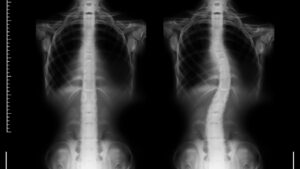Back pain relief is a common topic for a lot of individuals globally. In fact, just last January 2022, CNA released a commentary that stated that clinics are seeing a trend of patients with sedentary-related musculoskeletal issues, with more people suffering from pain due to prolonged hours sitting in front of their desks.
From constant, dull discomfort to sudden, sharp pain that leaves you unable to move, back pains come in many forms. Fortunately, there are several steps that can help avoid or mitigate the pain. We will explore ten posture, stretching, and exercise tips to do so.
The importance of stretching and exercising to relieve back pain
Stretching and exercising are imperative components of a successful back pain relief programme. Regular exercises help to strengthen and maintain the flexibility of your back muscles, preventing and even alleviating pain and aches.
Stretching, on the other hand, helps to boost your flexibility and motion range, reducing your risk of developing muscle injuries and strains. Combining these two activities certainly boost the health of your back, allowing you to experience a pain-free lifestyle.
Lower back pain exercises
a) Strengthening exercise
Lower back pain treatment exercises are vital in maintaining a strong and healthy back. Strengthening exercises target specific muscles supporting your spine, protecting it against any future injuries and alleviating certain back pain. An example of a lower back strengthening exercise is doing bridges.
First, lie flat on the floor on your back. Then, slightly bend your knees and keep your feet flat on the ground. Tighten your glutes and raise your hips away from the floor, keeping your body straight. Hold the raised position for a couple of seconds, then slowly lower your hips towards the ground. Repeat ten to fifteen times.
b) Flexibility exercise
Flexibility exercises are vital in boosting your motion range and alleviating your back pains. They should be conducted on a daily basis to prevent stiffness. An example of a lower back flexibility exercise is doing a knees-to-chest stretch.
Similarly, lie flat on the floor on your back, hugging both knees as far towards your chest as you can. Hold that position for up to 30 seconds, then release. Repeat up to three times.
Lower back stretching techniques
a) Seated stretches
Seated stretches are made convenient such that you can easily do it whenever you are seated in front of your desk. An example of a seated stretch is a seated forward bend.
First, sit on the edge of your chair with your feet fully flat on the ground. Then, adopt a straight sitting position, tilt forward at your hips and reach your hands toward your feet. Hold that stretch for up to 30 seconds, repeating it two to three times.
b) Standing stretches
Standing stretches can also be easily conducted wherever you are. An example of a standing stretch is doing a standing quad stretch.
First, stand up straight with your feet shoulder-length apart, holding onto a chair or wall for support, if necessary. Then, bending your left knee, grab your left foot with your left hand and pull your foot towards your glutes. Hold that position for up to 30 seconds, then switch to your right side. Repeat that for two to three times.
Posture and how it impacts your back pain
Poor postures are the fundamental cause of many back pains. They not only place unnecessary pressure on your spine but also on the surrounding muscles. Hence, not only does maintaining the right posture help you to alleviate or avoid back pains, but it also helps you to improve your overall appearance and health.
a) Sitting posture
When seated, it is crucial to maintain a straight and relaxed posture. Try not to cross your legs, as it can lead to muscle imbalances and poor blood circulation. Rather, ensure that both your feet are flat on the floor with your knees perpendicular to the ground.
b) Standing posture
Stand with your feet shoulder-length apart and your knees slightly bent. Pull your shoulders towards the back and down while engaging your core muscles. Stand straight and relaxed. Imagine there is a piece of string attached to the top of your head, pulling you upwards gently.
c) Sleeping posture
If you find yourself having back pain after sleeping, chances are you have poor sleeping postures. Choose a mattress that provides an adequate level of support for your spine. Additionally, your choice of pillow is vital too. Depending on which side you sleep on, whether it is sleeping on your sides or on your back, putting a pillow under your knees or between your knees can increase spinal alignment.
Conclusion
Back pain relief is manageable when you observe the right lifestyle habits outlined in this guide. By incorporating the abovementioned lifestyle habits, you can ensure a healthy and strong back. Nevertheless, if the pain persists despite best efforts, then it might be better to consider professional assistance.
Healing Hands Chiropractic is the place to consider. With many years of experience in this field, our team of chiropractors have relieved many musculoskeletal conditions. We even offer corporate wellness services in Singapore to companies that want to adopt healthy practices and overall well-being.
Do not hesitate to get started on having a pain-free life. Contact us at https://healinghands.com.sg/ to find out more!



